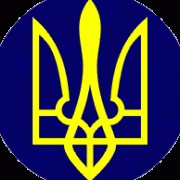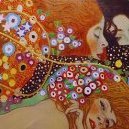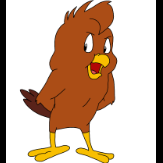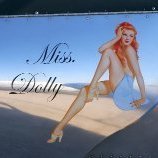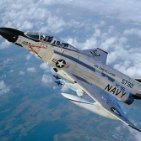Leaderboard
Popular Content
Showing content with the highest reputation on 08/29/2020 in all areas
-
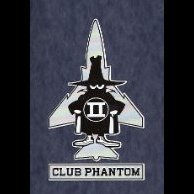
Canadian CF-104, Gilze Rijen, Netherland, TAM'84
Buster99 and 12 others reacted to Daniel Leduc for a topic
And now, Part 2..... That's it folks, hope you liked it, thanks for watching and have fun. Dan.13 points -
RAF FG.1 XV571 WILD HARE Phantom Conversion
Azgaron and 10 others reacted to Anthony in NZ for a topic
Small update today, cant really see the hours gone in. But I am back to the main fuse working on surface details...still lots to go.11 points -

Canadian CF-104, Gilze Rijen, Netherland, TAM'84
Buster99 and 9 others reacted to Daniel Leduc for a topic
Oh boy, look what I found, pictures that never made it up to RFI...... must had done those, 4 or 5 years ago. So there it is, PART: 1 , An Italeri kit from the box for most of it exept for the burner.... Tamiya paint with Canuck decals, very nice set by the way, wich I heard that they don't produce anymore..... dang !, I could have used 1 or 2 set. Hope you like it and part 2 is following..... Dan.10 points -
And now for some views of the ScaleWorx resin bits being added : vertical stab with the various RWR and EW antennae : IMG_6100 - 800 by Malcolm Reid, on Flickr Cheetah E had an asymmetric dorsal intake arrangement. One original Mirage III style intake and one modified larger intake. Note also ScaleWorx provide little resin oval pieces which I assume are some local reinforcing to do with the Kfir wing to Mirage fuselage join - it's location is in line with the fuselage main structural frame : IMG_6103 - 800 by Malcolm Reid, on Flickr Refuelling probe fairing : IMG_6104 - 800 by Malcolm Reid, on Flickr Ventral chaff / flare dispenser and an small intake and vent specific to the Cheetah E : IMG_6105 - 800 by Malcolm Reid, on Flickr Forward ventral fairing in place of Mirage IIIE doppler antenna - the azimuth antenna for the RWR must still be glued in place to this fairing : IMG_6106 - 800 by Malcolm Reid, on Flickr Canards, refuelling probe and nose temporarily in place using Prestik / tape - sorry, nose is skew - my fault - will be glued on straight, promise !! IMG_6109 - 800 by Malcolm Reid, on Flickr IMG_6110 - 800 by Malcolm Reid, on Flickr IMG_6111 - 800 by Malcolm Reid, on Flickr9 points
-
F-14A Tomcat VF-21 Freelancers Trumpeter 1:32
Loach Driver and 5 others reacted to Koralik for a topic
This time the F-14A Tomcat VF-21 Freelancers. Model, as always, made straight from the box + decals from CAMDECALS. The Trumpeter model is probably well known to you so there is nothing to write about this set. Maybe I will write that it is quite easy to assemble or maybe I already have experience with this set.6 points -
So then, some thoughts and observations regarding the ScaleWorx resin set and the assembly of these to the kit. John is a stickler for detail and has researched the Cheetah E well. I am using photos of Cheetah E 842 as a reference when gluing on the resin parts - John is still busy with the installation instructions. Referring to photos of 842 gives me the ability to compare the resin parts to the full size aircraft components and I can happily report that the accuracy is excellent. The resin John uses has good consistency and is easy to work with. There are no apparent surface bubbles or defects. My vertical stabilizer had a slight warp in the top part but this was sorted out by dipping the part into hot water. The surface detail (panel lines and shapes) is good. A few areas of riveting are a little vague but a quick twist with a sharp knife tip sorts that out. I hollowed out the two vents in the nose. Around 5 minutes of work with a sharp blade. These could not be cast hollow due to mould limitations. Some of the resin parts come with quite substantial casting blocks but a razor saw takes care of those. The parts that tested me a little were the canards - removing the casting blocks is a long process as the canard must match the curved intakes and at the correct angle - so careful trimming and test fitting is required until the proper "sit" is achieved. The vertical stabiliser slotted very snugly into the fuselage recess. I glued this in place using 2 part epoxy for strength. Another area which must be approached with care are the intakes. I think it's virtually impossible to get a 100% fit with the resin parts simply because, depending on sequence of assembly of the airframe, the kit intakes may be distorted. This area of the kit is really badly designed and requires a lot of clamping and filling. This may be due to my own fault as I focussed on getting a good wing / fuselage joint. So in summary, the resin parts are easy to work with, the kit not so much, especially the forward fuselage. As a fan of the Cheetah (and anything SAAF for that matter) I am really happy that ScaleWorx have given us this resin conversion set. If you like canard deltas, this resin set is for you. And then we have the Cheetah D set on its way....good times6 points
-
Well I had another look at the tip tanks. But first here's what I started with. A white marble blended in a little bit less than the insignia. Followed by a yellow marble on the uppersides to depict the typical fading of the dayglo orange. Then I added the orange (again MRP) and I knew that th colour depends a lot on the base coat since it's more like a transparent ink. I'm not really sure what to think of the result. The yellow udnercoat on the upper sides ( front in the picture) worked quite well but the white marble on the bottom and the sides (the rear one) looks quite unrealistic. I'm considering to sand everything of and start over with a white base and yellow marble for the uppers. What do you guys think?6 points
-
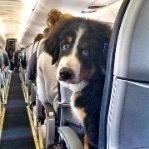
HH-60G Pavehawk Kitty Hawk 1/35 DONE!!
daveculp and 5 others reacted to Pete Fleischmann for a topic
...still riveting! cheers P6 points -
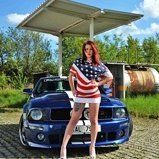
Bf 110C-4. 1/NJG 3, Benghazi 1941 1/32 Revell/Dragon
XOPCT and 4 others reacted to Miloslav1956 for a topic
Thanks all. Here is today update.5 points -
Hi All! Time for the exhausts! First I started with glueing the exhaust stubs with their flame dampeners (pointy ends). Then I could fit the lines between the tips and the correct cylinder, a rather backwards way of doing it, but It worked like a charm! This job was a very fiddly undertaking, but the parts fitted very well, so one piece at a time, slowly and steady…. Finally, all pipes in place! Some more paint touch-up and a final wash later; My camera gives too much light as the model is so dark, but it looks really good IRL. More to come soon! Stefan5 points
-
.thumb.png.84c5d3a464f2dd83f0ac37a5aac81ec8.png)
1/32 Bf 109E Adolf Galland
Paulpk and 4 others reacted to Antonio Argudo for a topic
no problem Mike, should be there in the 109's transparent stockpile5 points -
.thumb.png.84c5d3a464f2dd83f0ac37a5aac81ec8.png)
1/32 Bf 109E Adolf Galland
Landrotten Highlander and 4 others reacted to Antonio Argudo for a topic
thanks Chrish, I'm very glad you are enjoying this build, cheers! thanks mark, seems like you can find 76 or 02 landing struts on the 109's , cheers porps painted, picture don't show the green quality of the 70 but it's there, I promise cheers5 points -
So I figured why wait. I masked off the control surfaces as I did not want to add any more paint to them lest their "lighterness" disappear, and shot some more IJN Gray mix, this time with the small airbrush for more targeted control. I am now much happier with the color density and the reduced prominence of the PLW emphasis on rivets/panel lines. The engine/mount is just set in place for this shot; I've got quite a bit of work yet before it is installed permanently. The tailplanes, with "fabric" control surfaces Closer shot of engine and mount. After spraying more of the main fuselage color I wound up with the inevitable grainy surface from spraying slowly with fast-drying paint. So I did the lacquer "magic trick" and just filled the airbrush with Mr leveling Thinner and hosed the model down. Voila - smooth. BTW in the above shot it looks like the rivet detail is completely lost from the wing root, but that's an artifact of the angle and the crappy phone camera. It's still there.5 points
-
Hi all, Here my last built : the Italeri Mirage IIIC in israeli 117 squadron markings. I used Isradecal marking but I painted the red markigs on air intake. Hope you like it4 points
-
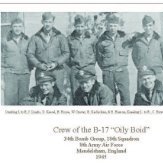
Liberated during quarantine -PB4Y-1
chukw and 3 others reacted to patricksparks for a topic
Well after almost putting this in the trash twice this week(2 almost fatal paint disasters) I've managed to get it back in control.... I used Tamiya spray can lacquers for the white, grey and clear, I used stood off masks for the demarcation between the colors, thank goodness I used paper card stock for the masks as I had to go back and use them 3 times... I put a wash on the fuselage today, feeling better about it now.4 points -
Partly true but most of the modellers on LSP are some way up the learning curve and not novices. Indeed, one set of variables people often ignore is that health, vision and dexterity decrease as you get older. Technology that makes it "easier" and to get a better looking model is not to be scoffed at. And good tools and materials do instil confidence and create a certain joy. Incidentally, I take far better photos on a purely manual 645 medium format camera using 120 roll film than I ever have with digital, seldom use ready meals as opposed to cooking from scratch, and still prefer writing with a quality fountain pen using bottled ink, so am not at all opposed to old methods. Tony4 points
-
.thumb.png.84c5d3a464f2dd83f0ac37a5aac81ec8.png)
1/32 Bf 109E Adolf Galland
MikeMaben and 3 others reacted to Antonio Argudo for a topic
started with the under surfaces weathering , some inspiration references cheers4 points -
A few years ago I watched a programme about a photographer who demonstrated the difference between "skill" and "buying power". He gave a top of the range expensive SLR camera (it was pre-digital camera era) to a novice while he used a basic snapshot camera and compared results. He showed how it is possible to take great photos with a basic camera and take rubbish photos with a great camera, all it took was an understanding of light, exposure, aperture, etc. The same can be said about models. I have seen great and expensive kits turn into poor models and the other way round. At the end it all boils down to skill and understanding the medium. It is still possible for someone to make a bad model even using the most cutting edge tech. Rady4 points
-
I managed to spend most of today masking and painting panels on the atomic boomerang, so I thought I'd post a couple of photos as proof. They're basically the same photo, but taken against two different backgrounds in an attempt to capture the naked-eye colours accurately. First, the standard light blue background: Looks good, but gives a bronze cast to the colours. The one below, taken against a white background, is much closer to reality: I had intended to do even more panel variations, but got a bit sick of it, and decided enough was enough. I still have to to the black canopy framing and nose cone on the crew pod, and then I can probably start applying the decals. Both supplied USAF decals are scuffed up and slightly damaged, so I'm thinking this might be a good opportunity to finally use my Silhouette Portrait machine and make some masks! Kev4 points
-
To keep the Phantom Phans happy, a F-4D testing out a Walleye: another pic, during combat testing, can be found on pg 12 here: https://www.afhistory.org/wp-content/uploads/APH-Summer-2020-Vol-67-No-2-All.pdf Jari4 points
-

Quinta Studio - 3D printed interior for NEW P-51D, Su-25, F-16C
coogrfan and 3 others reacted to ValiantWagon for a topic
Just a passing thought. I have always taken the view that unless you are crafting your parts from scratch from virgin plastic using original plans then you are an assembler not a modeller. So for the majority of us we simply choose to find ways to make our assembling more enjoyable, productive and pleasing to our eyes. These look as if for many including me that they will raise the enjoyment level which is what a hobby is about.4 points -
Mistel - Wot? Another one?
Derek B and 3 others reacted to Bruce_Crosby for a topic
Hi Guys, I actually pulled my finger out this week and did some modelling on the Mistel. So here's some pix with captions. The me-262 was treated to a layer of MMP Grey Primer overall then some of their metallics underneath. Late was instructions called for bare metal under most aircraft. This is 1946 so definitely metal. More Mistel II by Bruce Crosby, on Flickr The gear doors were mainly wood with metal trim so would be painted. The nose undercart front door is metal here and its going to be load bearing, for the launch dolly front strut. More Mistel II by Bruce Crosby, on Flickr The Ef-126 was treated to MMP Grey Primer then the flanks were painted in Mission Models RLM76. same for the wing undersides, no bare wood. Just bloody stupid - bare wood sucks up water which adds weight, warpage and fungus. What's most North West European weather? Cold and wet, so bare wood is Verboten! Top of the fuselage and port wing had RLM82 applied. More Mistel II by Bruce Crosby, on Flickr The starboard upper wing got some RLM81 as did a couple of areas of the fuselage spine. More Mistel II by Bruce Crosby, on Flickr Time for some mottle along the blue flanks using RLM81 and 82. More Mistel II by Bruce Crosby, on Flickr Engines on for a look-see. More Mistel II by Bruce Crosby, on Flickr A trial fit on the Me-262: It's also got some RLM 76 on it. More Mistel II by Bruce Crosby, on Flickr More Mistel II by Bruce Crosby, on Flickr So far, so good. Regards, Bruce Crosby More Mistel II by Bruce Crosby, on Flickr4 points -
for me, a peek in the box adds little value when it masquerades as a review one or both of test-fit / test-build and assessment of accuracy is what i would class a proper review as a former reviewer i can see why few are done these days - they are a huge drain on time i actually find threads where new kits are sometimes torn apart quite useful, because that is often where SMEs contribute4 points
-
Make the others jealous
scvrobeson and 3 others reacted to dutik for a topic
Added some gizmos to my Toryu kit: Bulged wheels, metal wheel struts, dashboard and a japanese airfield fire extinguisher. Safety first! The concept notes are great: Photos of the real thing inside and out, a short story of the whole construction and two step-by-step builds of two different variants from the first boxing, with notes where to take care and how to superdetail it even more. Only nitpick: Wish they had used a larger font to make it better readable. If you don't have references of the Toryu and don't want to spend a lot of money for books: Grab this, this fits all your needs for a complete build. Highly recommended! Regards - dutik4 points -
Dan, thx for the tips and apologies for the belated response. With this Mig I actually used plastic card as a base from which to sand down... the challenge isn't the material but more just getting the shape right, which I'm struggling with. Regarding the Zacto parts, Chris has equipped me well! I just tonight glued the intakes onto the bottom fuselage, I snapped these pics before doing so. Note the corrected, off-center "wedge" between intake and fuselage. The wedge is symmetrical on the Trumpeter kit, which is plainly inaccurate. Also on the above pic, note that the intake leading edges are natural metal. I sprayed on a coat of Vallejo steel and masked off the sections that will be hard to paint after assembly. I had to rebuild the lower leading edge since it became ever so slightly indented after sanding the intake trunking. The front of the RD-33's is nicely done by Trumpeter. I sprayed the compressor with Vallejo Jet Exhaust, the pics I have indicate these to have a pretty dark appearance. Cheers, Marcel4 points
-
Working slowly on a few items. I have glued the windscreen to the fuselage. I have added some detail under the windscreen, Rear fuselage sanded and primed, almost there.... Tail getting close to done. Rear canopy. Dan4 points
-
posted on modelofrum.cz F-16C cockpit in progress4 points
-
I don't have any of their kits in the stash. I don't really care for how they are engineered. That's not a knock against them, just my personal preference. I know their are many many modellers out there that love building their kits. Ron3 points
-
My thoughts exactly - sanding stick it is then! Good point! I tried that but gave up since the number of coats necessary seems to be infinity. Now we have: white undercoat (drying as I'm writing) to even out all contrast, followed by yellow which will add the desired contrast3 points
-
I thought I'd try something different to glue the nose onto the aircraft. I don't trust the strength of a super-glue join. So I glued a very thin piece of plastic card to the rear of the resin nose using 2 part epoxy. This will allow the nose to be glued to the fuselage using Tamiya extra thin liquid glue to create a strong bong : IMG_6099 - 800 by Malcolm Reid, on Flickr Plastic card trimmed : IMG_6112 - 800 by Malcolm Reid, on Flickr3 points
-
Some more work in progress. The gap at the rear wing root must be filled - this is visible as the inboard elevon (actually the SAS moving surface) is drooped when the aircraft is at rest : IMG_6094 - 800 by Malcolm Reid, on Flickr IMG_6095 - 800 by Malcolm Reid, on Flickr3 points
-
Thanks very much guys! While surfing the net, I came across this old film. Gives you a pretty good idea of how Strike Wing conducted anti-shipping operations. You can see some pretty heavy damage being inflicted by 20mm cannon and rockets (also note a high percentage of the rockets appear to miss their targets). The ironic thing (from the perspective of Norwegian 333 Squadron crews) is that many of the crewmembers on those boats were fellow Norwegians!3 points
-
Air Intakes glued and painted…. Fuselage halves glued and the intakes glued, very, very nice fit here! The cockpit and wheel well glued to the bottom piece…. I´ll leave this joint unglued for now so I can get a good fit against the radome later. Ejector pin marks in the intakes, Yikes! I suppose they will be invisible when done! But I sanded them down as much as I could anyway, I just can´t leave these things! The fin glued to the spine, excellent fit but just a very narrow edge to glue it to, a real indentation had been better and much sturdier! Morer to come soon! Stefan3 points
-
Love this! The result looks incredible and my prime motivation is the result. Great to see the technology and innovation in the hobby. Marcel3 points
-

Italeri TF-104G Marineflieger - final struggle
F`s are my favs and 2 others reacted to Fanes for a topic
The masks are on - I#ll let the picture do the talking this time: Already with some yellow (MRP - marvellous stuff) And in total: Next up: the tip tanks and the dayglo orange (already painted, but no photos so far) and the red for the german flag.3 points -
A rather odd way of building...3 points
-
You know, you guys are making it really hard to have any shelf space. Do you know how big a 32nd Phantom is?3 points
-
Italeri Tornado GR.4 sprue pics
scvrobeson and 2 others reacted to Rick Griewski for a topic
I feel alone sometimes. I just need the data on the kit. Give me the skinny as was said in the older days. Photos show a lot. Shoot all the categories. I can see features, assembly break down, texture, sprue gates, flash and resin casting quality etc. Minimal judgements please. I care little for topics and opinion related to market appeal or relative comparison to rivals. The review should not be a sales team review. Please do not talk about kits the manufacturer could have produced. I care little if more variants maybe/could be produced later and so is a good investment for the market. Is the kit I am looking at correct? Warn me of warped wings, inaccurate areas or challenging fit so I can decide if I want to deal with it. Finally snip some parts and assemble a few areas that to the reviewer look challenging or are well done/impressive. The perfect review comes up when I open the box. I just need data to convince me to take the risk with my $156 bucks.3 points -
Thanks for the feedback guys, took your advice and applied another dark wash to the cannon shells. Since then I've been puttering in a few areas. The subject I'm building is a later production Mosquito and as such, it has a bulged housing aft of the tailwheel. Originally, it was thought that this was a housing for "Monica" tail warning radar. After a deep dive into this subject over on Britmodeler, it was determined that this bulge covered an IR "flasher" light. This was a primitive form of IFF to reduce the chances of Mosquito nightfighters and intruders being shot down by friendlies,. No such need for this device on Strike Wing or tactical fighter bombers, so in these cases, it was plugged with a bit of plywood. Tamiya didn't include this plug, so I simply added it from plastic card. Now moving forward to the bomb bay. Tamiya has opted to provide separate side walls for the bomb bay. Nice idea, it allows you to add extra detailing without having to work on the model itself, while it is upside down. Here are the kit side walls. Only mods so far are to drill out a lighting hole in one of the door retraction arms and to start adding some of the wiring on the side panels. Next up is one of the bay door hydraulic retraction arms. I added a total of 13 extra bits to replicate the various hydraulic lines and fittings. Sorry for the crappy pictures, it looks better in real life (and much better than the basic kit part). Trust me! Here is a great shot of the actual bomb bay (provided by a very kind gent over on Brit Modeler). You can see the hydraulic arms that I detailed immediately behind the cannons. This picture also gives you an idea of how "busy" the bomb bay was with dozens of control cables, fuel, hydraulic lines running to and fro. I'm going to try my best to replicate this mess. I'm not going to capture ever single line, I'm also not going to add details which will be hidden once the bomb bay is finally completed. Speaking of which, just to see how it looked, I dry fitted the side walls. This gives you an idea of how large the Mosquito's bomb bay was. Later bomber versions were able to squeeze a 4,000 lb "Cookie" bomb into this space. Compare this to similar American medium bombers such as the B-25 which had a much lighter bomb load, much less speed and range and many more crew members who had to go into harm's way to deliver that payload. While i was at it, I added a windshield washer fluid line running from the silver holding tank to the forward cockpit bulkhead. Just for S&G's, I added the cannons to see how the whole area will look once done. Note that the side walls adjacent to the cannons are completely blocked so there is no point of adding details in this area. Gotta work smarter, not harder, right? That's it for today lads, thanks for looking.3 points
-

SH Tempest Mk V "Kicked Up A Notch". January 14/21 New eBook!
Victor K2 and 2 others reacted to chuck540z3 for a topic
Thank you Gents! August 28/20 A short update, after a LOT of work! The next Steps are #28-30, where the landing gear wells are created and the top and bottom wing halves are glued together. Before I did any of that, I checked the condition of the big kit Parts B1- B3 and found both good and bad. Like the fuselage halves, the good news is that there is plenty of good detail throughout. The bad news is that there are many surface flaws and the plastic is generally rough. An example on the bottom Part B1. Are those rivets raised or depressions? Note the slightly rough finish on the left. Finding many other flaws, I started to sand them off…. And sand and sand, until I sanded the entire wing bottom smooth. The top wing Parts B2 and B3 had their own issues, with rough plastic and many rivet depressions that were shallow and not crisp. More sanding……. After many, many hours of re-scribing and re-punching the detail that was removed by sanding, I used Tamiya panel line accent color as my go-to method of looking for trouble. This is iterative. You add the wash, check for flaws, fix them, then add some more, fix a few more flaws, etc...... A close-up. Since this is the bottom that will rarely be seen, I did a “60% job” of replacing about that percentage of detail. I’m picky, but I’m not crazy…… Now the top wing parts got the “100% job” (every rivet, every panel line), because you will see all of this detail easily- and I am a bit crazy! This single part on the top probably took 4 hours of sanding and detail repairs. It's hard to compare, but the rivets and panel lines are now much sharper than they were before sanding. For those who might think all these rivets are over the top and unrealistic, they won’t look that way after paint and clear coat. I promise….. Dry fitting the wing halves together, I found that they didn’t mesh very well, mostly due to pins that were too wide and poorly cast, so I cut them off completely. With them out of the way, the parts fit together fairly well now. Although I haven’t done the landing gear wells yet, I thought I would check the wing fit, which can be problematic on many aircraft models. Dry fit, they look pretty good and filling gaps will be easy. In a couple of weeks, I should have the landing gear wells assembled and painted. According to many build threads of this kit, they can be a real PITA, so we’ll see what’s up with that! Cheers, Chuck3 points -
I am inching along on this build. The small window on the fuselage was glued into place after I placed some rivets on the clear piece. It took two tries to get the hairspray chipping on the prop blades right. I wanted very subtle chipping, mainly on the leading edge of the blades. I also did some hairspray chipping on the spinner and backplate. This was a bit of small test to see what could possibly done on the main fuselage. As for the dark green color, I decided NOT to use the Mr Hobby Kawanishi Green that I specifically ordered for this build. Instead, for the spinner, I used a mixture of two AK Real Color shades: IJN D2 Green Black (RC305) and Luftwaffe RLM 83 Blue (RC327) mixed at a 3:1 ratio. The prop components were also treated to a round of salt fading Here is the completed prop mounted on the engine, posed in my light box. The salt fading, if desired, can be dialed back after application by gently rubbing micromesh on it.3 points
-
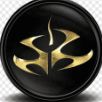
Quinta Studio - 3D printed interior for NEW P-51D, Su-25, F-16C
scvrobeson and 2 others reacted to vince14 for a topic
This may very well persuade me to get my Trumpeter Su-25 off the shelf - I've been thinking about doing it in Chad markings...3 points -

HH-60G Pavehawk Kitty Hawk 1/35 DONE!!
scvrobeson and one other reacted to Pete Fleischmann for a topic
thanks Chuck- funny.. the only model I’ve ever saved receipts for is my big AT-38 that is still in progress. I have a Manila envelop full of receipts for that beast! I’m sure it’s got to be several thousand dollars by now- thankfully most of these rivets are from the custom sheet that Woody made for me, but I do have a bunch of his other sets that are for odd sizes, circles, etc- cheers Pete2 points -
Hello Gentlemen, I’ll try to answer a number of questions here. The 1/32nd scale A6M2-N conversion made by MDC looks like it should give a good start on a Rufe, but looking at the build done here at LSP by Rick K I see a lot of little details that could be added. If you want to ever do the conversion I’ll write up what all needs to be done. Regarding chipped paint on the Zero, remember that it was spec’d out as a carrier plane. Because of this the attention to reducing corrosion was paramount which meant all paint application was done over a red-oxide primer. IJN aircraft such as the George or Betty were not designed to be carrier-borne and so different paint standards were applied. As Alex stated, Zeros based on land would suffer more paint chipping from ground debris, but this should still not be overdone. I suspect that in the last year of the war production standards slipped and the quality of the Zero’s paint did drop, but up until then keep chipping to a minimum. What the paint did do was fade as the surface of the original olive-gray paint oxidized and turned light gray. I believe it was the examination of such derelict derelict aircraft, both during the war and later, that gave rise to the myth of the light whitish-gray Zero. A Zero out in the field for a while thus would have its upper surfaces somewhat faded to gray, but this oxidized layer could be rubbed off in areas that were commonly contacted, exposing the somewhat darker original paint colour. Several photos show this happening on the side of fuselage and the wing root below the cockpit. Here contact from the pilot and/or ground crew wore away the oxidized paint. Further wear would then expose the underlying red primer and then eventually the bare aluminum. But given the combat attrition rate of the IJN I suspect this end process was not all that common. Last of all, the A6M2 indeed could be found in the field applied dark green camo scheme. The use of such upper-surface camo began in the Solomons, possibly as early as January 1943 but by the beginning of April 1943 it was quite widespread. Then in early April both Mitsubishi and Nakajima adopted the use of factory applied dark-green camo to the Zeros coming off of the production line. Keep in mind are that most field-camoed A6M2s would have been built by Nakajima, as Mitsubishi stopped production of the M2 in June 1942. From the end of August all new Nakajima-built A6M2s would have had the the yellow wing leading edge IFF markings and the white surround to the fuselage hinomaru, although the latter was often more-or-less obscured by any field applied camo. At the risk of hijacking this tread I’ll post three possible A6M2 field-applied camo schemes. I don't think any decals for these markings are available, but they still should not be to difficult to replicate. Ryan2 points
-
Polikarpov I-153 ”Chaika” ICM 1/32
Troy Molitor and one other reacted to Phantom2 for a topic
Hi all! Finally on her own legs, a bit wobbly, but much sturdier then it looks. I painted the underside of the wing WEM WWII VVS Underside Blue. The top side painted with WEM WWII AMT-4 Green…. I masked the pattern with masking putty and tape, painted with WEM WWII VVS AMT-6 Black, and I removed the tape and putty as soon as I could. If you let the black stuff on too long it creeps on to the newly painted area, not good! When fully dry I removed the tape and this is the result; Time to rig the thing! Tools of the trade…. First I make a little anchor of a piece of 0,25mm plastic rod and glue it to a length of acrylic tread with CA… Here I could tread the line from the inside and out, otherwise I could just drop the piece of rod trough the hole from the outside. …and secure with a piece of tape…. Repeat until all lines are tread and secured… I glued the anchors on the inside too with CA, not necessary really…. Time to glue the top wing, tread and secure the lines and put the model away to dry. Forgot to take a pic, DOH! More to come soon! Stefan2 points -
If you don't already have this Chuck ... hth2 points
-
Thanks all! Mike......gotta make due with what you can find? Lol Engine work is mostly done. Surprisingly, it didn't fall off the nose while I shot this.... Comments or suggestions to improve.....hit me.2 points
-

First project on here (Kinetic 1/32 F/A-18C)
Paul in Napier and one other reacted to Crew Dog for a topic
Considering, (for the most part as far as base coat painting goes) the main fuselage, flight control surfaces and pylons done, I next turned my attention to stores, bang seat and the burner cans. The first plan of attack was the AGM-65E Maverick from Eduard Brassin, and I am blown away by the detail included on the missile (plus, they come two in a kit, so I have a bit of a stash accumulating ). The overall missile body was painted in FS36375, and the rear was detailed in Rust, Zinc Chromate Yellow and Aluminum. The GBU-12 was also given an overall color of FS36375, with the aft band of the guidance kit and forward fins painted Olive Drab, since during this timeframe there was a bit of mixing of parts for Mk.80 series of bombs between Olive Drab and Light Compass Ghost Gray. Next came the SJU-17 NACES ejection seat, which was included in the Aires Cockpit set. It was mostly done early on in the build, with only the harnesses left to do (mainly due to me dreading threading PE). After painting the straps in Olive Drab and clasps/buckles in Chrome Silver, I assembled the straps and attached them to the main assembly. After I was happy with that, I moved on to the boarding ladder from Flightpath UK. This is my first time working with anything they've made, and seeing this, if I can use anything from them going forward, I definitely will be! The outer faces of the latches and ladder have been shot in FS36375, with the inner latch faces and guts of the ladder sprayed with matte white (which will be glossed during the decal phase). Lastly are the burner cans. The inner ceramic petals were shot with matte white, the fouled with a dark wash from Ammo by MiG and a fine coat of Jet Exhaust, mainly around the outer edges For the outer turkey feathers, the base coat was Gunmetal, but realizing that they didn't have the copper tinting that the real thing has, a thin mist of Jet Exhaust was sprayed over it. Seeing this as too light in tone, I sprayed Gunmetal mixed with black to darken them up, but my mix was off and they ended up just looking like Gunmetal again. So, since I was priming my drop tanks at this point, I sprayed a very fine mist of primer black on the petals, both to tone down the metallic look and to overall darken the petals. I am very happy with this result, and know that the right one in the picture will need to be darkened more. The inner plates will still need more carbon fouling, but beyond that, the nozzles are done! My apologies for the photo dump, but I got my momentum back, possibly due to being so close to the decal/dirty up phase. In any case, thanks for stopping by the hangar!2 points -

Quinta Studio - 3D printed interior for NEW P-51D, Su-25, F-16C
stusbke and one other reacted to Starfighter for a topic
And THIS actually is my point.2 points -

MiG-21PF in Polish Service - Done!
Hartmann352 and one other reacted to Dragon for a topic
Ok, I spent the evening getting this build wrapped up. A few pics of the completed build. A pic on top of the display case It was an enjoyable build not worrying about accuracy, panel lines, or seams. Stuff that typically bogs me down with builds. Now to get ready for the Training Day GB next month. Thanks for looking in! Mike2 points

